BRAZIL
Rio de Janeiro

Rio de Janeiro
Rio de Janeiro
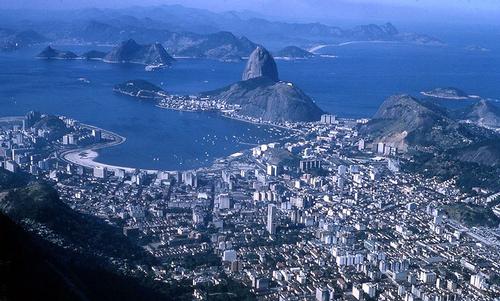 Rio de JaneiroPhoto: Public Domain
Rio de JaneiroPhoto: Public Domain
Rio de Janeiro is Brazil's second largest city after Sao Paulo. Rio de Janeiro is a city with a varied mix of attractions. Rio has a mountainous backdrop, beautiful sandy beaches, slums (favelas) and skyscrapers. All this makes Rio de Janeiro unique. Rio de Janeiro consists of two main regions, the North Zone (Zona Norte) and the South Zone (Zona Sul), the latter of which is known for tourism and beautiful beaches. Rio de Janeiro is also famous for its samba clubs, spectacular carnival and mardi gras celebrations. Sun worshipers enjoy the beaches; Copacabana Beach and Ipanema Beach are the most famous beaches in Brazil.
| advertisement |
| Hotels Rio de Janeiro |
Location
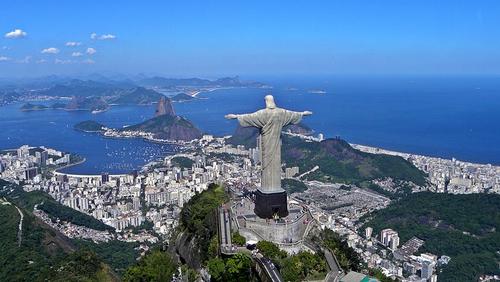 Rio de Janeiro from the statue of Christ the RedeemerPhoto: Artyominc CC 3.0 Unported no changes made
Rio de Janeiro from the statue of Christ the RedeemerPhoto: Artyominc CC 3.0 Unported no changes made
Rio de Janeiro is located at 22° 54 South latitude and 43° 14 West longitude and has an area of 1182.3 km². More than 6 million people live in the heart of the city. With its suburbs, about 13 million people live in Rio, making it Brazil's second largest city. The statue of Christ the Redeemer towers high above Rio.
Weather
Rio de Janeiro's weather is considered moderately tropical, with high temperatures all year round and plenty of sunshine. Temperatures in Rio de Janeiro are usually between 25 °C and 30 °C. Rio de Janeiro is located in the Southern Hemisphere, which means that the seasons and climate have been reversed. Summer falls between December and February, often continuously until the beginning of March. The winter months, from June to August, are also warm weather with less rain.
History
Before the discovery by the Portuguese, the native Botucudo, Maxakali, Puri and Tupi Indians lived in the area we now call Rio de Janeiro. The city was discovered by the Portuguese when they reached Guanabara Bay on January the first of 1502. There the city takes its name from Rio de Janeiro, the January river.
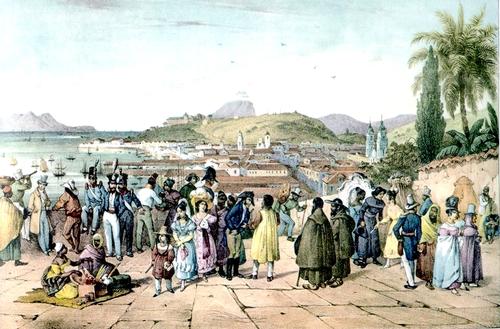 Rio de Janeiro early 19th CenturyPhoto: Public Domain
Rio de Janeiro early 19th CenturyPhoto: Public Domain
Rio de Janeiro was the colonial capital until 1808. The city became the capital of the empire of Prince Pedro I of Portugal. In 1889, Rio de Janeiro became the Brazil's capital till 1960 when Brasilia took over.
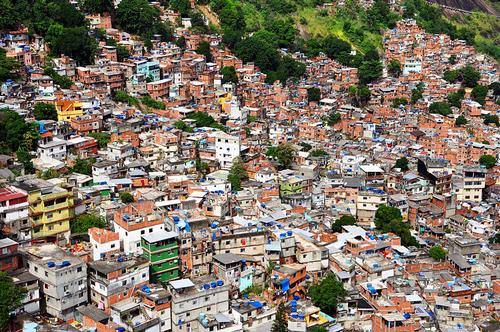 Rio de Janeiro FavelaPhoto: Chensiyuan CC 4.0 International no changes made
Rio de Janeiro FavelaPhoto: Chensiyuan CC 4.0 International no changes made
After the Second World War, the city took the form of a modern city. Cars and skyscrapers defined the street scene. Highways were built as well as a seven-mile bridge between Rio and Niteroi. The shift from an agriculture-based economy to an industrial economy was not always smooth. There was a huge increase in the population and a lot of crime took place in the slums (Favelas). From 1960 to 1975, Rio was a city-state, under the name of "State of Guanabara". In 1975 the city was added to the province of Rio de Janeiro. Rio hosted the 2016 Summer Olympics. That was the first time that a South American city got its hands on organizing the event.
Sights
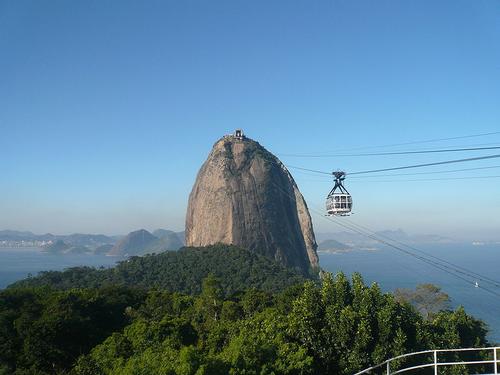 Cable car Rio de JaneiroPhoto: Helder Ribeiro CC 2.0 Generic no changes made
Cable car Rio de JaneiroPhoto: Helder Ribeiro CC 2.0 Generic no changes made
Rio de Janeiro is known for sports in particular football. Rio has a large number of attractions, including a number of stadiums, such as the Maracanã Stadium, one of the largest stadiums in the world. The Flamengo Park, the Morro Dois Irmãos Park and the Jardim Botânico (Botanical Gardens) are well-known parks that are a haven of peace for the tourists who visit the city. The port of Rio de Janeiro is considered one of the Seven Natural Wonders and attracts tourists from all over the world. The carnival celebrations, samba groups and tourist beaches such as Copacabana, Ipanema and Leblon entertain the visitors even more. A giant statue of Jesus Christ the Redeemer at the top of Corcovado Mountain is the city's popular landmark. A number of major tourist attractions are described below.
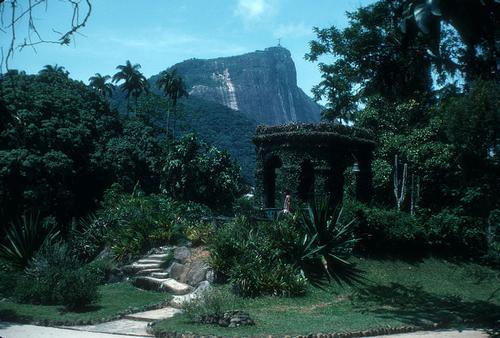 Botanical Garden in Rio de JaneiroPhoto: Jerrye and Roy Klotz CC 3.0 Unported no channges made
Botanical Garden in Rio de JaneiroPhoto: Jerrye and Roy Klotz CC 3.0 Unported no channges made
The Botanical Gardens lie between the statue of Christ the Redeemer and Leblon Beach. They are beautifully situated on the edge of Tijuca Forest. The gardens were first created in the early 19th century by Dom Joao and have developed into the most beautiful gardens in Brazil. There are thousands of plants and flowers, but there are also cafes. Because it is very busy on weekends, it is best to visit the Jardim Botanico on weekdays.
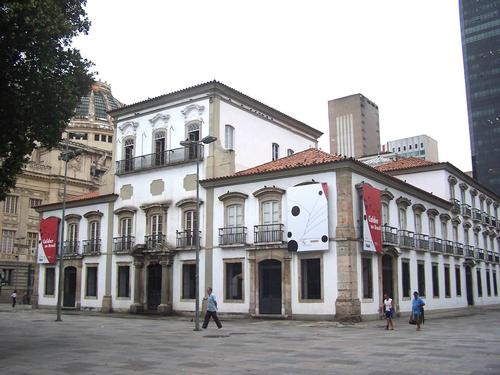 Paco Imperial Rio de JaneiroPhoto: Fulviusbsas in the public domain
Paco Imperial Rio de JaneiroPhoto: Fulviusbsas in the public domain
The Paco Imperial was designed to be the headquarters for the captains of the Brazilian army during the Portuguese rule. It was taken into use as a palace when King Joao VI ascended the throne. The Paço Imperial was home to Dom Pedro I and II. When the monarchy was overthrown, the Paco Imperial became a city post office. The building was restored in 1980, it was converted into a concert hall and has been maintained regularly since then, and now also includes a cinema, restaurant and café.
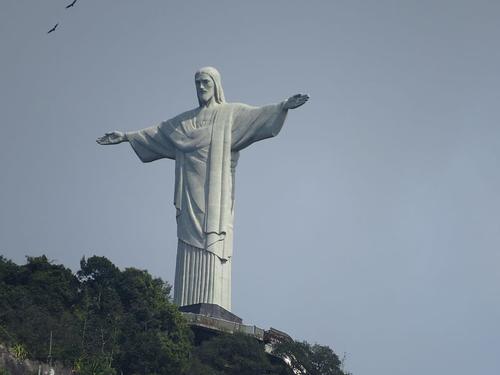 Statue Christ the Redeemer in Rio de JaneiroPhoto:KátiaLira CC 3.0 Unported no changes made
Statue Christ the Redeemer in Rio de JaneiroPhoto:KátiaLira CC 3.0 Unported no changes made
Christ the Redeemer is a 38 meter high statue of Christ with his arms spread, which embraces the city. It is perhaps the most famous monument in all of Brazil. The statue has been on top of the Corcovado mountain since 1931. The view over the city and the coast is impressive.
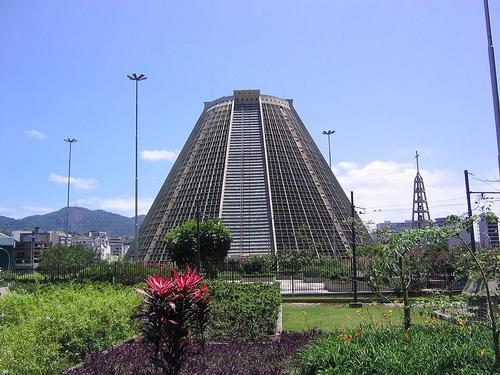 Cathedral Sao Sebastao Rio de JaneiroPhoto: Phil Whitehouse CC 2.0 Unported no changes made
Cathedral Sao Sebastao Rio de JaneiroPhoto: Phil Whitehouse CC 2.0 Unported no changes made
São Sebastião Cathedral is housed in a cutting-edge conical concrete building. Inaugurated in 1976, the cathedral consists of a huge cone with four beautiful stained glass windows. The interior of the cathedral is spacious and can accommodate more than 20,000 people. There are many paintings, statues and murals designed by local artists.
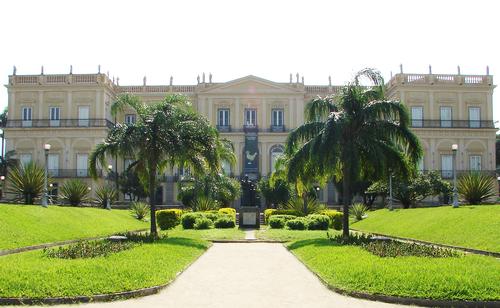 National Museum Rio de JaneiroPhoto: Taurus_br CC 2.0 Generic no changes made
National Museum Rio de JaneiroPhoto: Taurus_br CC 2.0 Generic no changes made
Rio's National Museum has a number of artifacts dating back centuries. Showpieces are coins, cannons and a collection of religious art. The museum itself is housed in a pink Baroque-era palace that once belonged to the Brazilian monarchy. Many of the exhibits were part of the personal collections of Emperor Pedro II and Empress Teresa, both of whom were amateur botanists and archaeologists.
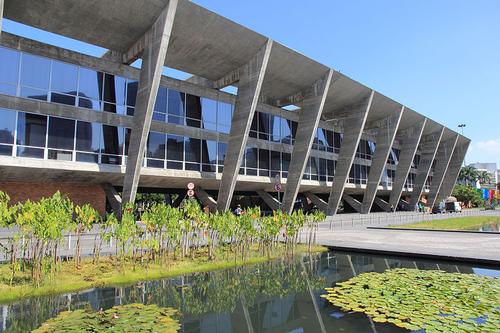 Museum of Modern Art Rio de Janeiro Photo: Halley Pacheco de Oliveira CC3.0 Unported no changes made
Museum of Modern Art Rio de Janeiro Photo: Halley Pacheco de Oliveira CC3.0 Unported no changes made
In addition to the permanent collection, the Museum of Modern Art regularly showcases talent from across the country with temporary exhibitions focusing on contemporary art, emerging artists and photography. Unfortunately, much of the early work was lost to a fire in 1970, but since then the collection has been steadily supplemented with quality pieces.
Tips
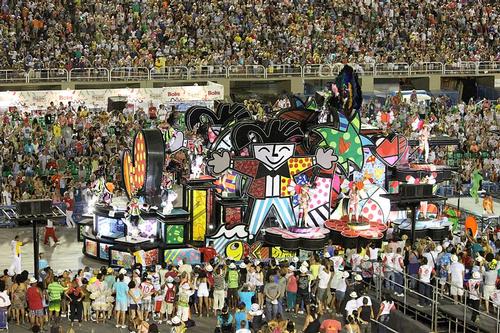 Sambadrome during carnaval in Rio de JaneiroPhoto: Jarod Burns CC 4.0 International no changes made
Sambadrome during carnaval in Rio de JaneiroPhoto: Jarod Burns CC 4.0 International no changes made
The Carnival In Rio de Janeiro is a gigantic party that you should not miss. The highlight of the Rio de Janeiro Carnival are the parades in the Sambodromo, a permanent stadium for 40,000 spectators. For months, Rio de Janeiro's samba schools have prepared their show, each with a special theme, elaborated in imaginative, exotic costumes. Each show has 2,500 to 5,000 participants. A jury awards points to the parades that start in the evening and continue into the early hours of the morning.
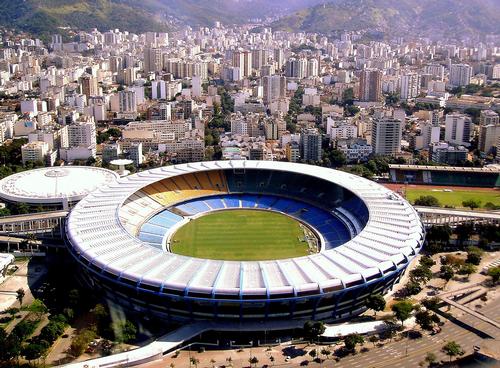 Maracana Stadium Rio de JaneiroPhoto: Arthur Boppré CC 2.0 Generic no changes made
Maracana Stadium Rio de JaneiroPhoto: Arthur Boppré CC 2.0 Generic no changes made
The Maracana stadium is a highlight for some tourists. It is the home of Brazilian football and world famous because some of Brazil's best footballers played here. The stadium is huge, with space for over 100,000 fans to create an incredible atmosphere. The stadium dates from 1950 and was renovated in 2007.
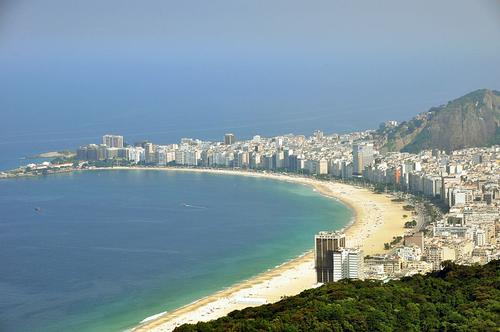 Copacabana Rio de JaneiroPhoto: Chensiyuan CC 4.0 International no changes made
Copacabana Rio de JaneiroPhoto: Chensiyuan CC 4.0 International no changes made
There are a large number of beaches with associated attractions in Rio, but Copacabana and Ipanema are without doubt the most famous. Each beach has a lively boulevard, where you can shop and there are many bars and restaurants. On the beach you can swim, practice water sports, sunbathe and of course play football. Copacabana is the busiest beach, Leblon Beach is popular with families.
Useful links Rio de Janeiro
BBC Country ProfilesWorld Fact Book Explore all Countries
How to call
Last updated June 2024
Copyright: Team - The World of Info